Nuclear era. Part 2
A total of 1054 nuclear explosions have been conducted in the USA. In addition to New Mexico, Marshall Islands and the landfill in Nevada, tests were conducted in Colorado, Mississippi and Alaska.
Special mention deserve underground nuclear tests conducted in the period from 1965 to 1971. on the island of Amchitka, the Aleutian Islands archipelago. The purpose of these nuclear tests was to study the characteristics of seismic waves caused by a nuclear explosion, and the ability to distinguish them from natural earthquakes, as well as to study the processes occurring in the earth's crust with a powerful nuclear explosion at great depths.
Drilling a well deeper than 1870 meters for the most powerful underground test in stories US began in August 1967. It was decided to use a thermonuclear charge, called Tinnyka, with a power of 5 Mt, originally created for the Spartan anti-missile missile.
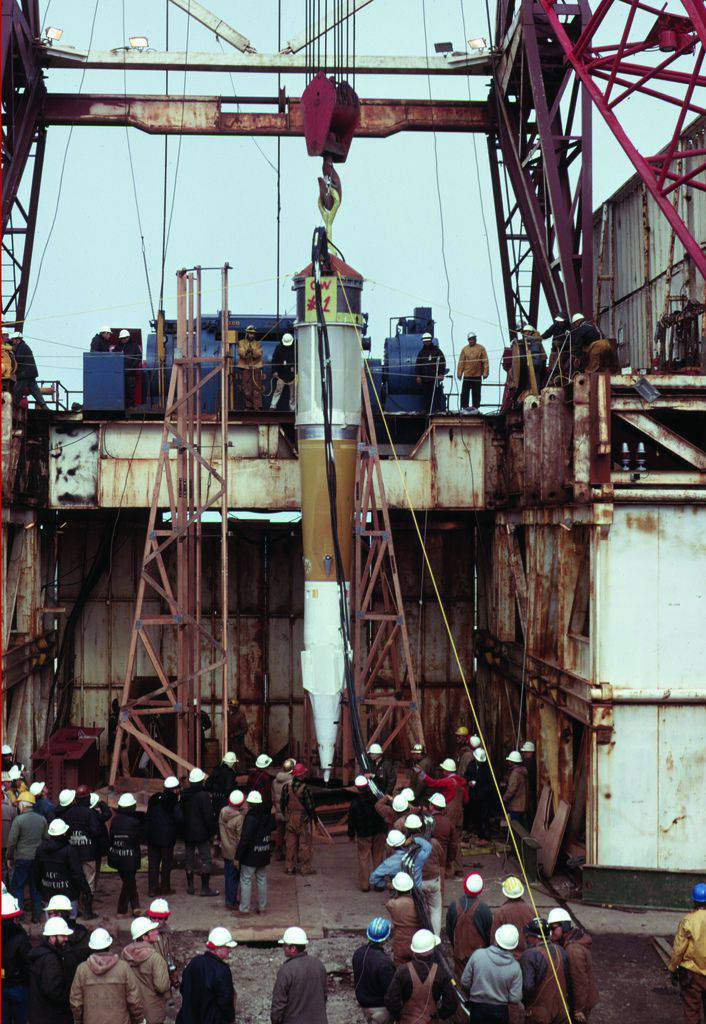
An explosion of 6 on November 1971 of the year recorded an earthquake magnitude Xnumx on the Richter scale on Amchitka Island, causing land shifts across the island of 6,8 km² across the island, raising the ground to an altitude of about 308,6 meters, and major landslides on the coastline.
In total, more than 1945 nuclear warheads have been assembled in the United States since 66000 and more than 100 types and modifications of nuclear weapons have been created. The main carriers of atomic bombs until the end of 50's were strategic bombers, later the emphasis was placed on ballistic missiles deployed in silo launchers in the United States and on submarine rocket carriers.
After accumulating significant nuclear stockpiles weapons and miniaturization of warheads, American strategists began to consider it not only as a means of destroying major strategic and administrative-industrial goals, but also as a weapon on the battlefield.
In 50-ies, the doctrine of “limited nuclear war” appeared, according to which the use of nuclear charges was to be limited to a local territory outside the United States and not lead to an exchange of nuclear strikes between superpowers.
For the first time, the possibility of using nuclear weapons during the conflict, in which American forces were involved, was considered during the Korean War. Later, some American politicians and generals quite seriously called for a nuclear strike on North Vietnam.
In the 50-60s in the United States there was a saturation with nuclear weapons of all military branches. Nuclear warheads were equipped with anti-aircraft and aviation interceptor fighter missiles, torpedoes and depth charges. At the same time, nuclear artillery shells for 280 mm, 203 mm and 155 mm guns entered the arsenal of American units in Europe. The most lightweight were the "nuclear" recoilless guns "Devi Crocket": 120 mm M28 and 155 mm M29. In 1962, they entered service with the American infantry and parachute airborne divisions. For parts of the “special operations” portable nuclear mines were created in the form of satchels.
The American tactical and operational-tactical missile systems were widely adopted by the American troops deployed in Europe: Onest John, Little John, Corporal, Sergeant, Lacrosse, Lance. With their help, it was possible to inflict nuclear strikes on troop concentrations and defense assemblies in the immediate vicinity of the contact line.
The development and creation of new types of tactical warheads continued until the second half of the 80-x. It was then announced the production of 2000 "neutron" projectiles for 203-mm and 155-mm howitzers and 800 "neutron" warheads for Lance missiles.
Attempts by the United States to achieve overwhelming military superiority over the USSR almost led to a global nuclear catastrophe. In 1960, the number of nuclear weapons available to Americans was several times higher than the Soviet nuclear potential. At that time, about 6000 nuclear combat units were deployed in the United States, in the USSR, around 300 were on strategic carriers. The United States also had a great advantage in the number of carriers. At that time, the US Air Force consisted of 1300 long-range bombers capable of delivering 3000 nuclear bombs to the Soviet Union. In addition to the bombers, combat duty in the US was carried by the 180 ICBM Titan and Atlas, as well as the 144 Polaris missiles on the George Washington SSB and Eten Allen.
In 1961, it became known about the launch of the deployment of American PGM-19 Jupiter medium-range ballistic missiles in Turkey and Italy with the 2400 km launch range. Prior to this, about 60 PGM-17 Thor missiles were deployed in the UK. This significantly worsened the position of the USSR and made a sudden disarming strike on the command posts and bases of the Soviet strategic forces real.
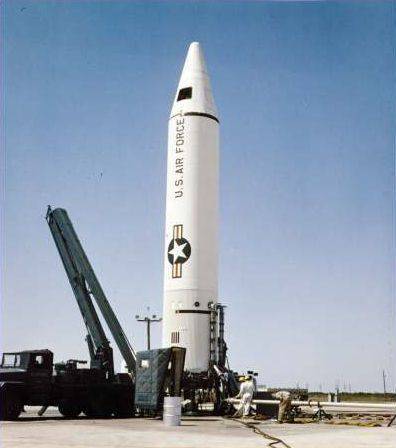
In response, the Soviet leadership decided to place the BRSRM-12 and P-14 in Cuba. Both types of missiles carried thermonuclear monoblock combat units with a power of 1 Mt. The medium-range P-14 ballistic missiles had a launch range of up to 4000 km and could reach Washington from Cuba. The deployment of Soviet missiles in Cuba almost led to the beginning of a nuclear war, these events became known as the "Caribbean crisis." As a result of bilateral negotiations, Soviet missiles were withdrawn from Cuba, and American missiles from Turkey. After the “Caribbean Crisis” was resolved, a direct telephone line was established between the governments of the USSR and the USA, and both parties came to the understanding that they should refrain from rash steps in the field of nuclear weapons.
At the end of the 60-x in the US armed forces there were about 32000 nuclear charges, in the future their number began to gradually decline. This was partly due to a number of incidents involving the loss of nuclear bombs.
In February, the 1958 of the year in the air over the coast of the US state of Georgia faced the B-47 bomber and the F-86 fighter. After the collision, the fighter lost its wing, but its pilot managed to successfully eject. The fuel tanks were punched on the bomber, and one of the engines failed. In order to reach the airfield, the crew of the B-47 had to crash the Mark 15 thermo-nuclear bomb, which had fallen into the Bay of Wax, south of the resort town of Tybee Island. This bomb has not been found yet.
The most famous incident in the 1966 year in Spain. Then, as a result of the collision of the American strategic bomber B-52G and the KC-135 tanker aircraft, four B28RI thermonuclear bombs were dropped in an emergency. Both planes burned and fell apart in the air, and three bombs fell on land near the village of Palomares. One of them did not receive much damage and remained airtight. Two more collapsed and contaminated terrain with radioactive and toxic plutonium. The fourth hydrogen bomb fell into the sea off the coast, and its search took three months. The power of this lost at sea bomb in 1000 times the power of the one that destroyed Hiroshima.
Another similar incident occurred in January 1968, near the Tula Air Force Base in Greenland. As a result of the fire aboard the B-52G bomber, the crew was forced to leave it, and the unguided aircraft with four B28RI thermonuclear bombs crashed, hitting the ice of the North Star Bay 11 km from the runway base. As a result of the strongest blow and explosion of the fuel tanks, the bombs collapsed, and their filling caused radiation contamination of ice and sea water. In total, about 7,5 kg of plutonium was dispersed. An exploding bomber struck the ice of the bay, and the damaged bombs went to the bottom. The wreckage of the aircraft scattered on the area for several kilometers. Decontamination of the area took place in the most difficult conditions of extremely low temperatures and penetrating wind. It took eight months to collect most of the debris and radiation-contaminated ice. The search for bombs was not completely successful. With the help of the Star III manned deep-sea apparatus, three uranium shells, four tritium reservoirs, small fragments and parachutes were found and raised.
After the B-52G catastrophe in Greenland, combat duty in the air was stopped by American strategic bombers with nuclear weapons on board, and the final priority was given to strategic submarine rocket carriers patrolling in the ocean. As of 1980, 32 was aware of nuclear accidents and disasters.
At the end of 60-x in the United States began a gradual decrease in the number of nuclear charges. As of 1990, the Americans had about 22000 warheads on carriers and storage bases. Over the past 25 years, thanks to the START-I, START-II, START-III treaties concluded with Russia, the number of warheads as of 1 in March of 2014 was reduced to 1585 units. These warheads are deployed on 778 intercontinental ballistic missiles, submarine ballistic missiles and long-range bombers. In the US, there are still about 150 undeveloped media. According to the START-3 agreement, by February 2018, the number of deployed nuclear warheads should not exceed 1550 units, and the number of strategic carriers - 800 units, of which “operational deployed” should be no more than 700 carriers.
The basis of the American nuclear triad is ballistic missiles (SLBMs) deployed on submarines (SSBNs). Currently, the US Navy has XHUMX-type SSBNs of the Ohio with 14 SLBM Trident 336 (D 2). As a rule, 5 of 12 SSBNs are in the ranks and carry 14 SLBMs. Usually 288-8 boats are on duty every day in the ocean.
American SSBNs are based on sites located on the Pacific and Atlantic coasts. On the Pacific coast, this is Bangor, Washington; on the Atlantic coast, this is Kings Bay, Georgia.
At the naval bases there is a developed infrastructure for the maintenance and repair of boats. Here are located missile arsenals and protected storage for nuclear warheads.
The UGM-133A Trident 2 (D5) SLBM with a maximum launch range of 11 300 km carries a split head with 475 and 100 individual guidance units in kilotons. The Trident-2 SLBM has a high accuracy (KVO with 120 astrocorrection meters) and is capable of effectively hitting small, highly protected targets and delivering disarming blows to ballistic missile launchers and command centers. The nuclear warheads deployed on the Trident-2 make up more than 50% of the warheads available in US strategic nuclear forces.
In the ground-based part of the American nuclear triad, the rather old LGM-30 “Minuteman-3” ICBMs with a launch range of up to 13000 km are still in operation. They first took up combat duty in the 1970 year, the most "fresh" ICBM of this type was transferred to the Air Force in the 1978 year. Since then, the rockets have been repeatedly upgraded. Between 1998 and 2009 All rockets have gone through a solid fuel replacement program. But many American experts still have doubts about their high reliability. Part of the test launches of missiles taken from combat duty, was recognized as unsuccessful.
Currently, service is less than 450 "Minuteman-3". Their main part is equipped with Mk 21 monoblock warheads, with a thermo-nuclear warhead W87 with a power 300 kt with KVO about 180 meters. The disadvantage of the “Minuteman-3” ICBM is that they lack the means to break through missile defense, however, it is assumed that they will remain in service until the 2030 year.
In the aviation component of US strategic nuclear forces there are more than 90 bomber B-52H and B-2A. B-1В supersonic bombers are formally withdrawn from the composition of nuclear forces, it is believed that they are aimed at strikes only by non-nuclear means of destruction.
The production of the B-52 bombers was completed back in the distant 1962 year. Despite this, it is still regarded as one of the main carriers of nuclear bombs and air-based cruise missiles. In the past, the B-52 fleet was repeatedly upgraded. Currently, work is also underway to improve the combat characteristics of these honored machines, equipping them with modern EW communications and reconnaissance equipment. The number of armed B-52Hs is gradually decreasing, but it is planned that at least 40 bombers will be operated until 2040.
In 1993, the B-2A bomber, made using stealth technology, entered into service. In view of the end of the Cold War and the excessive cost of living, the entire 20 stealth bombers were built. Currently 18 machines are being used, aircraft 2 is lost in flight accidents.
On an ongoing basis, B-2As are located at Whiteman Air Base (Missouri). From time to time for training purposes, bombers are transferred to other airfields. Andersen airbase on the island of Guam is used as an intermediate airfield for flights over the Pacific Ocean.
When concluding the START-3 treaty, the American side insisted that when counting nuclear warheads, one nuclear charge is counted with one heavy bomber. Although it is known that, for example, the B-52H bomber is capable of carrying 20 cruise missiles.
In addition to strategic nuclear weapons, the United States military also has tactical nuclear weapons. Official data on it has never been published, but according to expert estimates, the US has about 500 tactical charges. Some of them are located in warehouses in the United States separately from carriers. This number includes about 100 warheads for sea-based cruise missiles.
The remaining nuclear charges are, apparently, free-falling B61 bombs of various modifications. It is believed that about 200 such bombs are stored at US air bases in Europe. The distinction between tactical and strategic nuclear weapons in this case is rather arbitrary, since tactical aircraft of the United States and its allies in Europe are capable of striking thermonuclear bombs on strategic targets in Russia.
Despite the fact that nuclear tests in the United States ceased in the 1992 year, while strategic and tactical arsenals were reduced, the improvement of existing and the creation of new types of nuclear weapons continues. Recently it became known that in 2018, it is planned to complete a test cycle and adopt a new B61-12 thermonuclear bomb. This aerial bomb will be equipped with a combined inertial and satellite navigation system and executive aerodynamic control surfaces, by which the accuracy of a bomb hit will increase several times. This, as well as the regulated power of the explosion, should reduce the possible collateral damage to its troops.
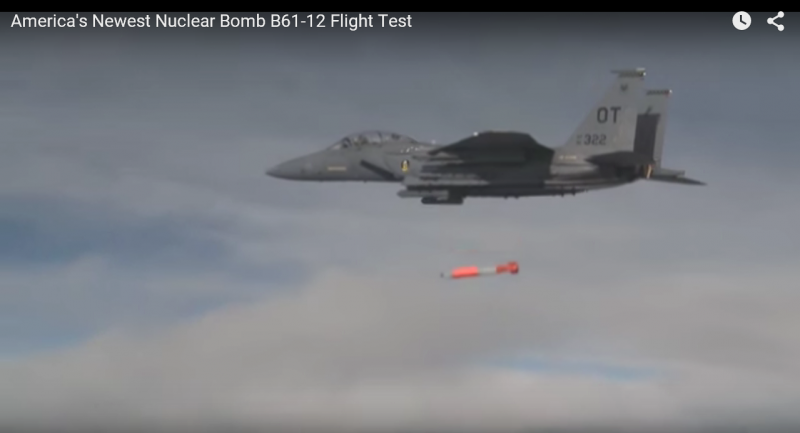
In perspective, the B61-12 bomb should replace all early B61 variants, except for the anti-bunker B61-11, with strategic and tactical carriers and become safer and more flexible in use.
In the United States, the Department of Energy is responsible for the development and manufacture of nuclear weapons. It includes 17 laboratories and research centers that deal with, among other things, nuclear safety issues, the development and improvement of nuclear weapons. Directly working with nuclear materials and assembling nuclear warheads is carried out by private companies under the supervision and guidance of experts from the Ministry of Energy. Production of weapons-grade plutonium and new warheads in the United States was discontinued in 1991, but production lines and production facilities have been retained and, if necessary, can be re-used. In addition, the United States has a very significant return potential, already accumulated stocks of nuclear materials allow them to be used to assemble new nuclear charges. Recently, voices about the need to resume nuclear tests at the Nevada test site have been louder and louder among American nuclear specialists and high-ranking military officials. If it does happen, it will mark the beginning of a new round of nuclear arms race and will provoke other nuclear states to respond.
Based on:
http://war20.ru/article/6
http://sites.ieee.org/gold/tag/atom-bomb/
http://www.nevadasurveyor.com/cannikin
http://virtualglobetrotting.com
http://www.ucsusa.org/nuclear-weapons/us-nuclear-weapons-policy/us-nuclear-weapons-facilities.html
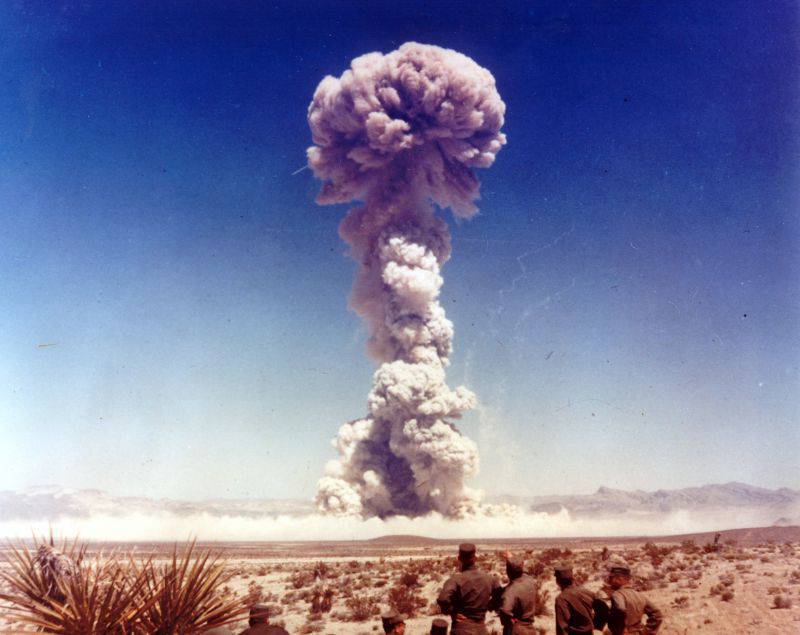
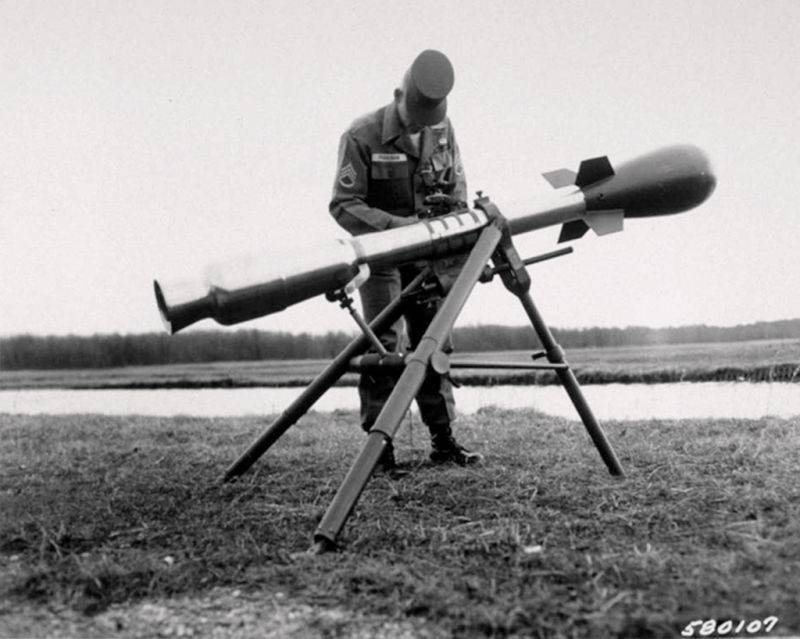
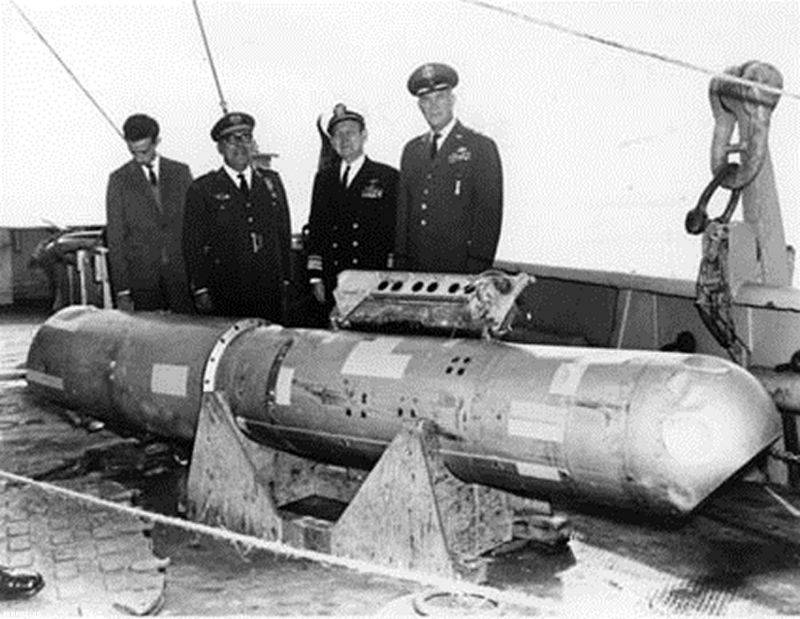
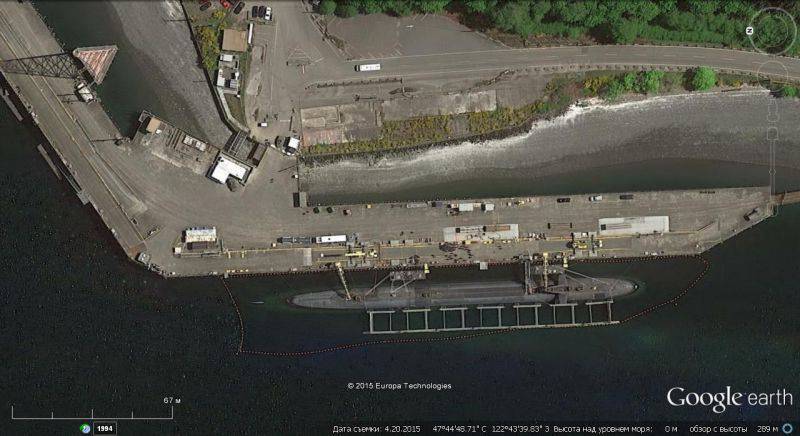
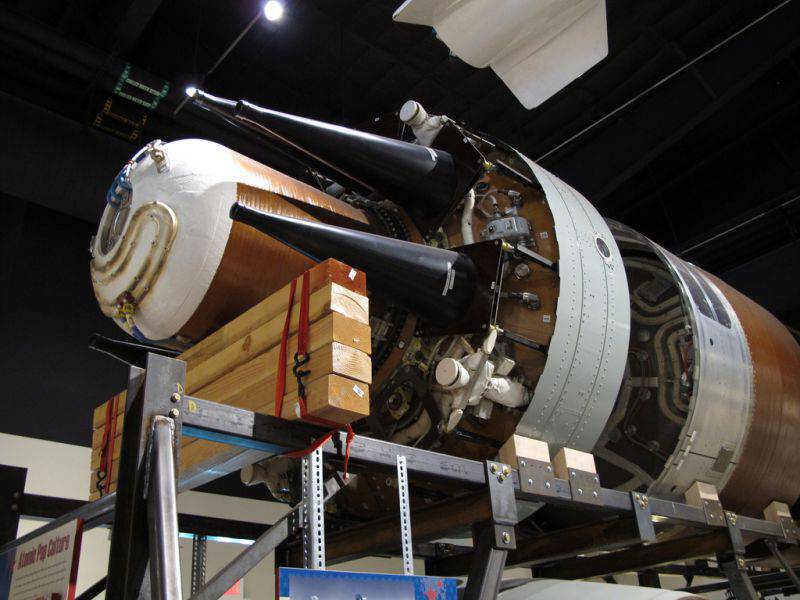
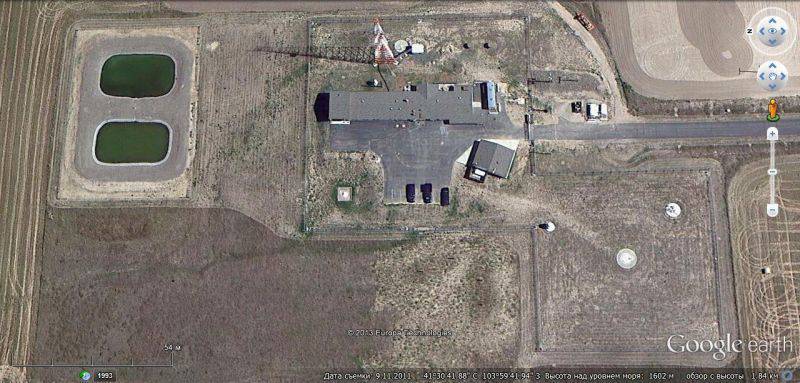
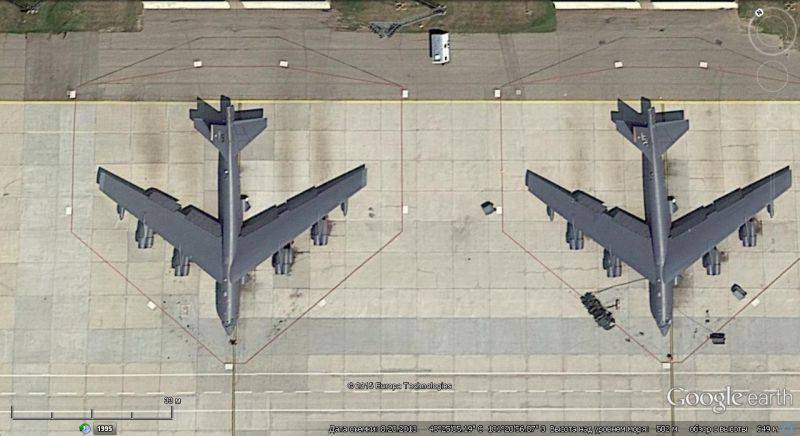
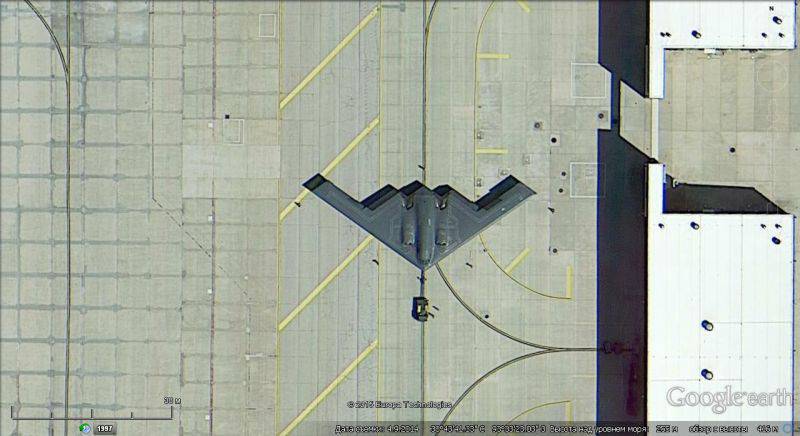
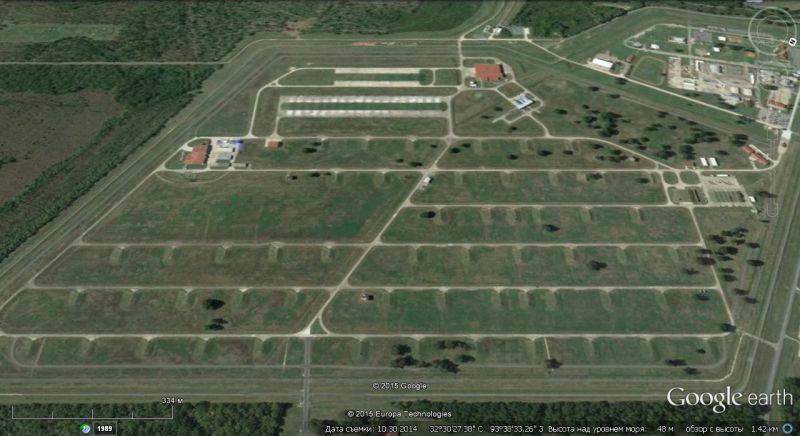
Information